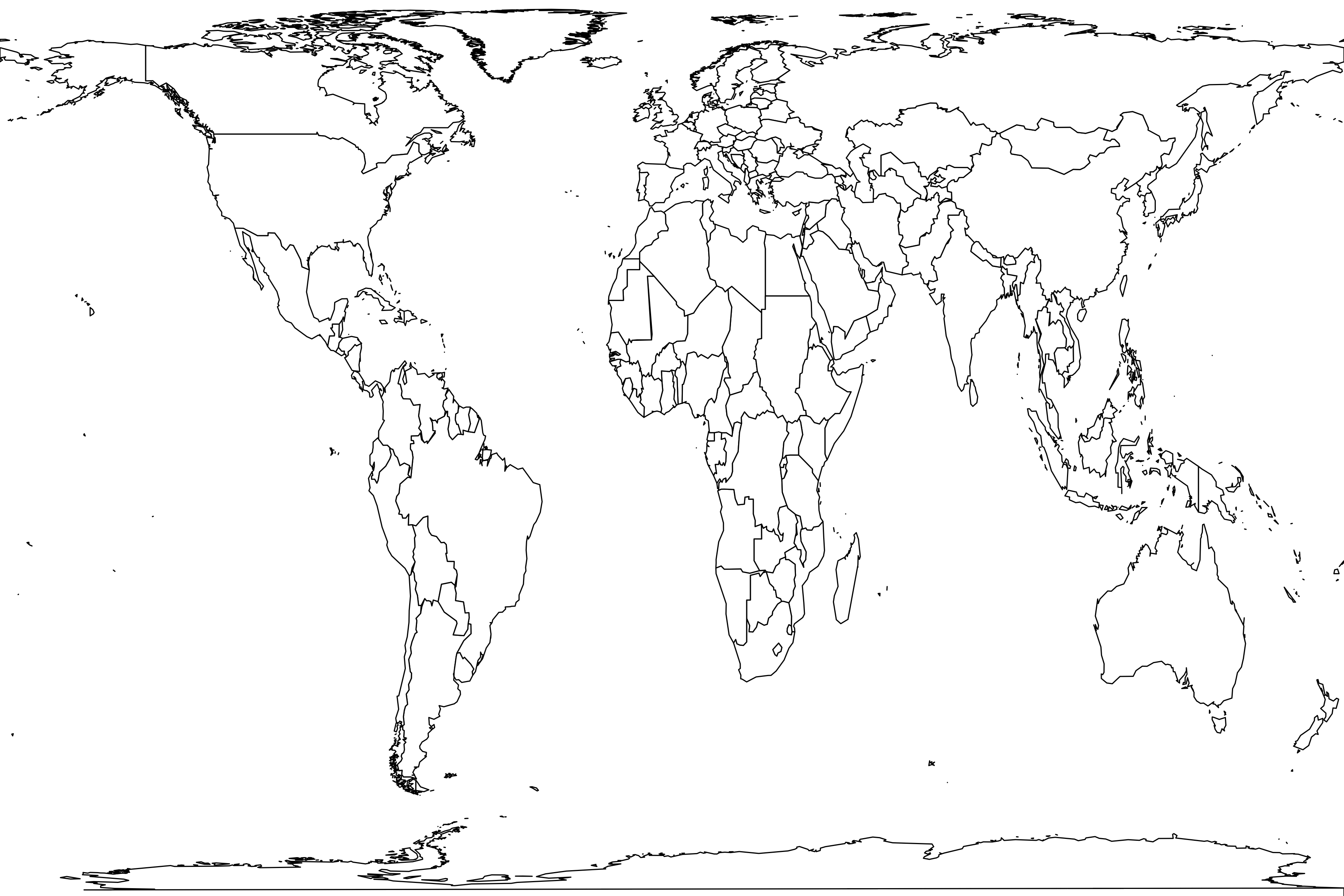Mass: 4.4 kg based on Morgan and Loughry 2009, Sanderson 1949 and Richard-Hansen et al. 1999
Latitudinal range: -31.2° to 38.8°Habitats: tropical/subtropical dry broadleaf forest (20), tropical/subtropical moist broadleaf forest (28), tropical/subtropical savanna (7), desert/xeric shrubland (2), temperate savanna (1), temperate broadleaf/mixed forest (3), montane grassland (1), mangrove (2)
Found in 69 samples
Argentina: Iguazú National Park (on roads)
Bolivia: Santa Rosa (control)
Brazil: Fazenda Sta Emília (acurí forest), Caxiuanã National Forest (March), Fazenda Cauaia (camera trapping), Estação Biológica de Santa Lùcia (primary forest), Estrada do Porto (2005), Tapiraí and Piedade Municipalities, Serra do Japi Biological Reserve (2006/2007), Serra do Japi Biological Reserve (2009/2010), Floresta Nacional Amapá (dry season), Humaitá Forest Reserve, Augusto Ruschi Biological Reserve, Ibicuí River, Quedas do Rio Bonito Ecological Park (camera trapping), Una and Arataca (forest), Una and Arataca (cabruca), Iguaçu National Park, Purus Project, Formosa Military Training Area, Private Reserve of Natural Heritage Recanto das Antas, Reserva Ecológica Michelin (floresta), Terra do Meio Ecological Station I, Terra do Meio Ecological Station II, Cachoeira Seca Indigenous Land I, Lapa do Santo (Early Holocene) (Holocene), Lapa do Santo (Middle Holocene) (Holocene)
Colombia: Parque Nacional Natural Farallones de Cali (forest), Parque Nacional Natural Farallones de Cali (scrub), Palmar de Altamira (bosque), Palmar de Altamira (palmar 2009), Palmar de Altamira (palmar 2011-2012), Otún Quimbaya Flora and Fauna Sanctuary (2009), Otún Quimbaya Flora and Fauna Sanctuary (2010-1), Otún Quimbaya Flora and Fauna Sanctuary (2011), Aguazuque Occupation 1 (Holocene)
Costa Rica: San Juan-La Selva Biological Corridor, Pacuare Nature Reserve, Piedras Blancas National Park
Ecuador: Chorongo, Refugio de Vida Silvestre Marina y Costera Pacoche
Honduras: Rio Sikre
Mexico: La Reserva Natural Sierra Nanchititla, Estación Científica Las Joyas, Tolistoque (dry season), Tolistoque (rainy season), Abra-Tanchipa Biosphere Reserve (survey 1), Pico de Orizaba National Park, Pastorías (lluvias), Pastorías (secas), Reserva de la Biosfera La Encrucijada (secas), Reserva de la Biosfera La Encrucijada (lluvias), Xalapa, Sierra Region (secondary forest), Sierra Region (oil palm), Santa Marta rock-shelter (Holocene)
Panama: Ecoparque Panama
Paraguay: Isla Alta
Peru: Los Amigos Conservation Concession (2005), Los Amigos Conservation Concession (2006), Ichigkat Muja - Cordillera del Cóndor National Park (2018), Ichigkat Muja - Cordillera del Cóndor National Park (2019)
United States: Kleberg County, Daniel Boone Field Station (riparian), Student Agricultural Gardens, Slaton Quarry (Middle Pleistocene)
Uruguay: Rivera (gallery forest), Rivera (plantation), Rivera (grassland)
| ♀ body mass | 4200 kg | N = 22 | Morgan and Loughry 2009 |
| ♀ body mass | 4030 kg | N = 103 | Morgan and Loughry 2009 |
| ♀ body mass | 5270 kg | N = 3 | Sanderson 1949 |
| ♂ body mass | 4350 kg | N = 10 | Morgan and Loughry 2009 |
| ♂ body mass | 4190 kg | N = 107 | Morgan and Loughry 2009 |
| ♂ body mass | 3468 kg | N = 3 | Sanderson 1949 |
| body mass | 5030 kg | N = 141 | Richard-Hansen et al. 1999 |
| ♀ ear length | 49 mm | N = 3 | Sanderson 1949 |
| ♂ ear length | 48 mm | N = 3 | Sanderson 1949 |
| ear length | 52 mm | N = 141 | Richard-Hansen et al. 1999 |
| ♀ head and body length | 538 mm | N = 3 | Sanderson 1949 |
| ♂ head and body length | 407 mm | N = 3 | Sanderson 1949 |
| head and body length | 460 mm | N = 141 | Richard-Hansen et al. 1999 |
| ♀ hind foot length | 91 mm | N = 3 | Sanderson 1949 |
| ♂ hind foot length | 84 mm | N = 3 | Sanderson 1949 |
| hind foot length | 98 mm | N = 141 | Richard-Hansen et al. 1999 |
| ♀ tail length | 432 mm | N = 3 | Sanderson 1949 |
| ♂ tail length | 360 mm | N = 3 | Sanderson 1949 |
| tail length | 382 mm | N = 141 | Richard-Hansen et al. 1999 |
See also Dasypus, Dasypus bellus, Dasypus hybridus, Dasypus kappleri, Dasypus sp., Dasypus spp.


